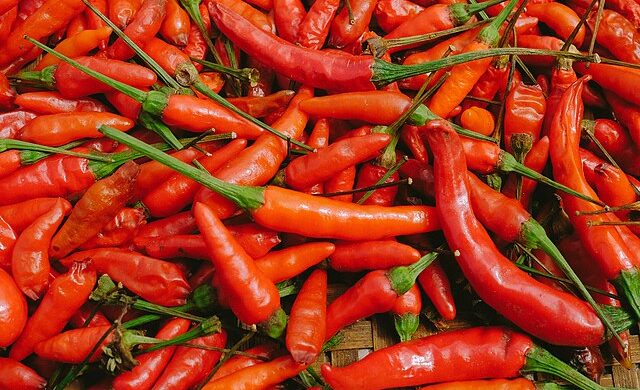The European Union (EU) is reducing the maximum residue levels (MRL) for various vegetables applicable to Vietnam, reports Nongnghiep.
Vietnam is one of the heavy duty users of pesticides globally and Vietnamese produce is frequently under EU inspections.
In the proposal that SPS Vietnam Office sent to the Plant Protection Department (NPP), some vegetables are particularly under strict control.
The EU proposal, which will become effective February 2025, specifies less than 0.01 parts per million (ppm) of chemicals in leafy vegetables.
Maximum Zoxamide Residue
The most drastic cut is for spinach and lettuce whose MRL for Zoxamide chemical content will be 0.01 ppm. Since the current maximum is 30 ppm, this means a reduction by almost 3,000 times.
Interestingly, although farmers commonly use Zoxamide against tomato leaf blight, the tomato maximum could increase fourfold from 0.5 ppm to 2 ppm.
Similar increases have happened for bulbous plants such as onion and garlic, which had previously low limits.
Zoxamide is a fungicide that farmers use to effectively fight blights in potatoes and other fungal attacks.
Though the fungicide has only minimal effects on humans such as skin irritation, it nevertheless leaves residue in edible plants.
Other Chemicals
Alongside Zoxamide, other chemicals that Vietnam’s farmers use on pepper, rice and coffee are also under MRL revision.
The first one is Fenbuconazole, a spray for controlling leaf spot in cereals such as wheat and rice. The others are Acetamiprid, an insecticide that kills sucking parasites on vegetables and fruits, alongside Penconazole, a leaf rust formula.
Tight Control on Vietnam’s Exports
According to Ngo Xuan Nam, SPS Vietnam Office’s Deputy Director, the 0.01 ppm limit always applies to exports without pesticide specification.
But following this new review that covers even vegetables with pesticide specifications, various agricultural departments in Vietnam are under notice. These include the Beekeeping Association, the Fruit and Vegetable Association and the Department of Animal Health.
Through 2024, the EU has increased control of Vietnam’s produce. Dragon fruit for instance, has been receiving 30% more inspections than in 2023 while chili is attracting 50% more inspections.
EU MRL Rules
According to the EU commission, there are 315 fresh and processed product imports that must meet the maximum residue level. Of these, any product that does not indicate pesticide usage has to meet 0.01 milligram per kg MRL limit.
In short, maximum residue levels for various vegetables will see farm produce from Vietnam review their pesticide usages. And as the data below will show, Vietnam has since 2019 been enforcing pesticide controls at home.
Vietnam Pesticide and Maximum Residue Levels Statistics
In 2022, Vietnam ranked the 6th worldwide in pesticide use at 162,000 tonnes, according to FAOSTAT. Comparatively, China led usage at 801,000 tonnes, while Indonesia, the other top Asian country, used 295,000 tonnes. The United States was second globally in 2022 at 468,000 tonnes.
What has Vietnam done to reduce minimum residual levels in fresh produce?
In December 2022, Vietnam’s Ministry of Agriculture and Rural Development (MARD) reviewed its 2019 approved and banned chemicals list. According to a U.S. Department of Agriculture (USDA) report, the review reduced insecticide totals from 850 to 689. However, banned products remained the same as in 2019 at 23 insecticides, 6 fungicides, 1 rodenticide and 1 herbicide.
How high is pesticide use per hectare in Vietnam?
According to FAO data, Vietnam had the second highest usage of pesticide per cropland area worldwide, at 13 kg per hectare. Comparatively, the leader Colombia utilized 16 kg of chemicals per hectare. Vietnam’s rate was almost two times higher than that of its next Asian user, Indonesia, at 6.5 kg per hectare.
Which agricultural produce are under MRL monitoring by the EU?
An August 2024 news report by Nongnghiep shows that the EU is increasingly monitoring durian, dragon fruit, okra and chili. Seafood monitoring extends to diverse fish, shrimp, quid, clams and frogs, alongside essential oils and rice noodles.
